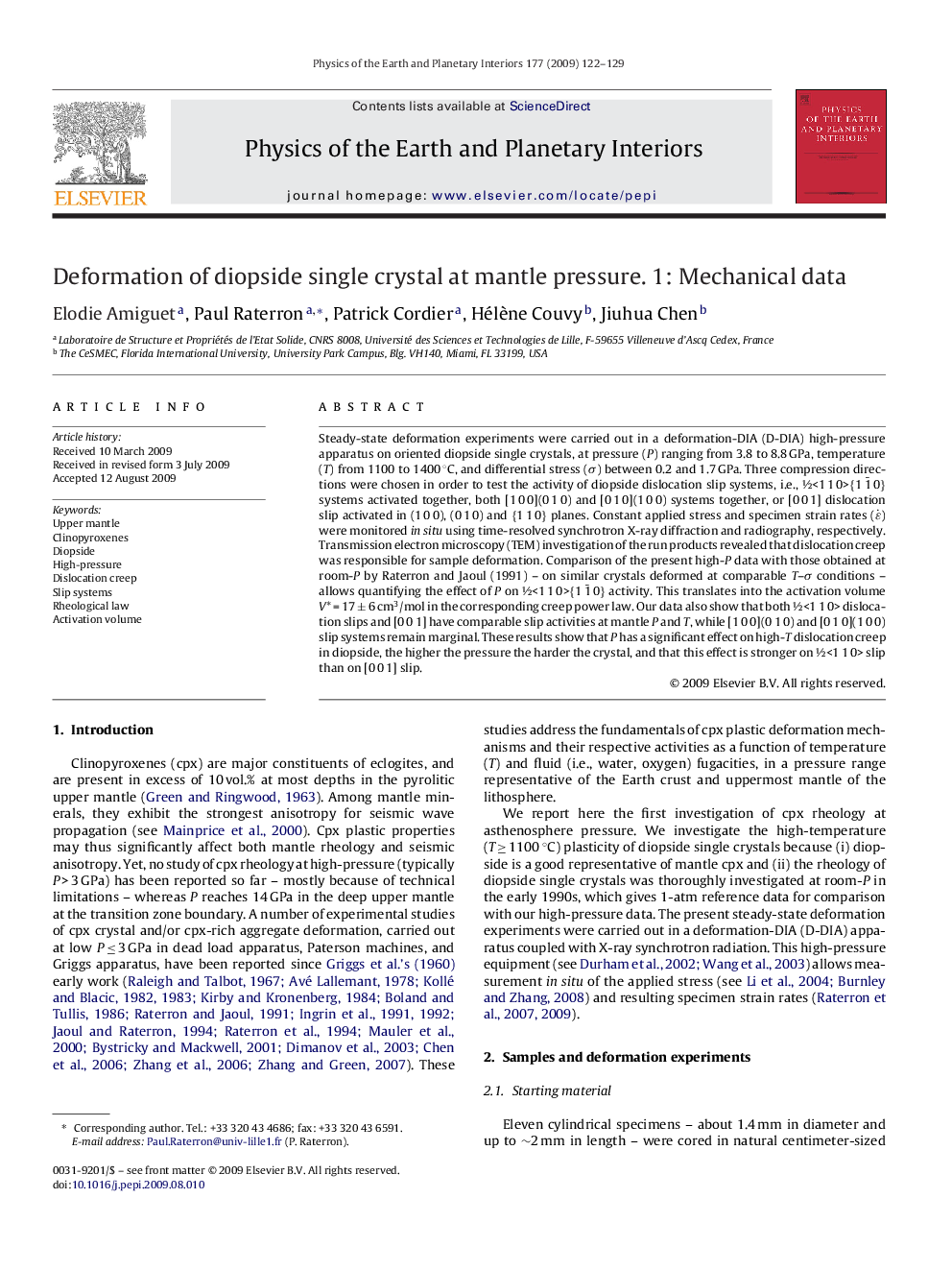| Article ID | Journal | Published Year | Pages | File Type |
|---|---|---|---|---|
| 4742338 | Physics of the Earth and Planetary Interiors | 2009 | 8 Pages |
Steady-state deformation experiments were carried out in a deformation-DIA (D-DIA) high-pressure apparatus on oriented diopside single crystals, at pressure (P) ranging from 3.8 to 8.8 GPa, temperature (T) from 1100 to 1400 °C, and differential stress (σ) between 0.2 and 1.7 GPa. Three compression directions were chosen in order to test the activity of diopside dislocation slip systems, i.e., ½<1 1 0>{1 1¯ 0} systems activated together, both [1 0 0](0 1 0) and [0 1 0](1 0 0) systems together, or [0 0 1] dislocation slip activated in (1 0 0), (0 1 0) and {1 1 0} planes. Constant applied stress and specimen strain rates (ε˙) were monitored in situ using time-resolved synchrotron X-ray diffraction and radiography, respectively. Transmission electron microscopy (TEM) investigation of the run products revealed that dislocation creep was responsible for sample deformation. Comparison of the present high-P data with those obtained at room-P by Raterron and Jaoul (1991) – on similar crystals deformed at comparable T–σ conditions – allows quantifying the effect of P on ½<1 1 0>{1 1¯ 0} activity. This translates into the activation volume V* = 17 ± 6 cm3/mol in the corresponding creep power law. Our data also show that both ½<1 1 0> dislocation slips and [0 0 1] have comparable slip activities at mantle P and T, while [1 0 0](0 1 0) and [0 1 0](1 0 0) slip systems remain marginal. These results show that P has a significant effect on high-T dislocation creep in diopside, the higher the pressure the harder the crystal, and that this effect is stronger on ½<1 1 0> slip than on [0 0 1] slip.
